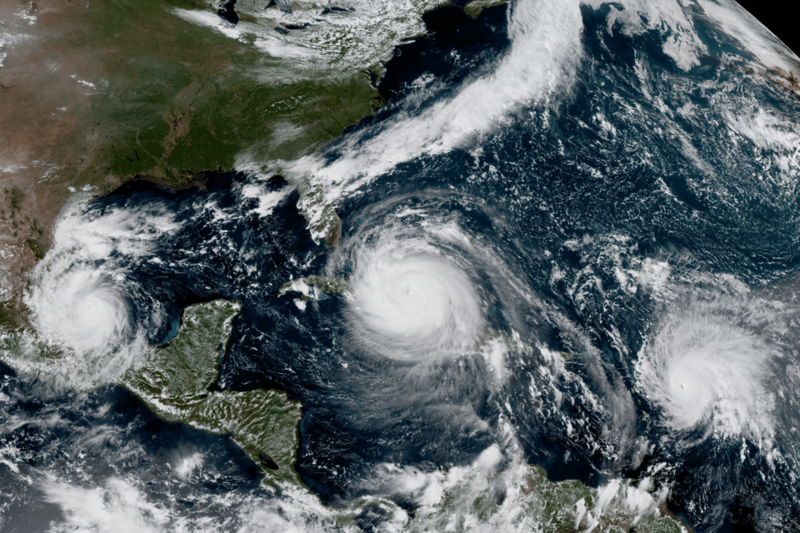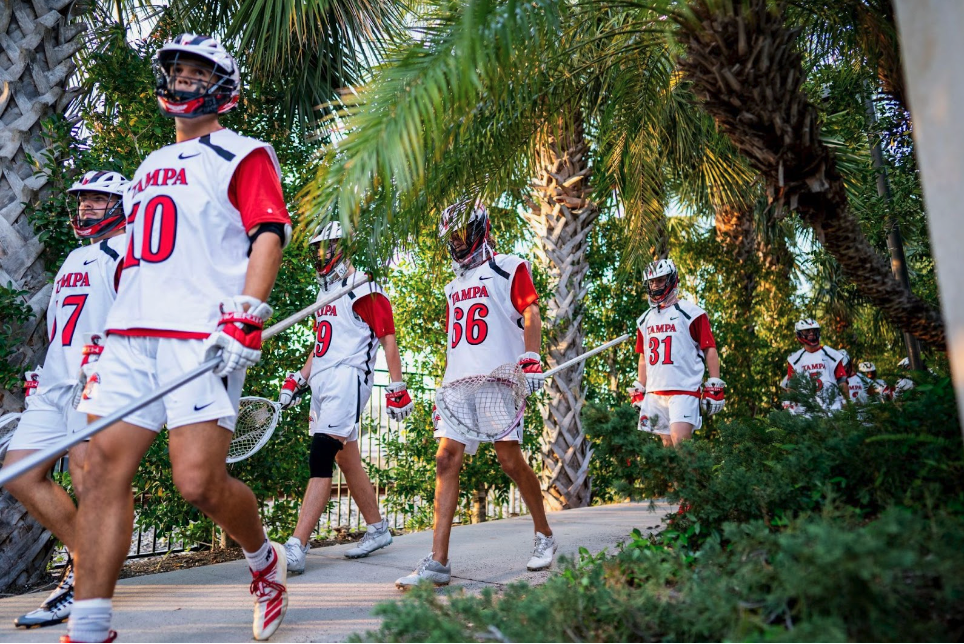by CLAUDIA RIVERA
Just three months into this hurricane season, we have already had seven storm systems develop into hurricanes that have devastated the Caribbean and mainland United States. You can’t flip through cable channels without seeing a storm map; if it’s not CNN, it’s NBC or Fox News — for this past month hurricanes have basically taken over our lives. Hurricanes and tropical storms are typical occurrences for Florida this time of year, but this hurricane season has been record-breaking. These extreme storm patterns are certainly a symptom of accelerating climate change.
If you were skeptical of the impact climate change can have on us, these recent events should pose as enough proof to make everyone a believer. Harvey, Irma and María were all major hurricanes that devastated the Caribbean and some southern states. Not only did their winds reach speeds of up to 180 miles per hour, but the geographical dimensions of these hurricanes and the speed with which they gained power were detrimental to those in its path.
We are not in the clear yet; with two months left of this hurricane season, there is still potential for it to become even more catastrophic. In light of recent tragedies, the debate on climate change has taken over news headlines again. Many believe that these hurricanes are “man-made” and that climate change has undoubtedly contributed to how destructive these storm systems have become.
Carbon emissions, reduction of aerosols, rising sea levels and solar variability are a few factors that, according to the National Oceanic and Atmospheric Organization (NOAA), must be considered when examining how climate change facilitates storm development. Through a series of studies, NOAA has been able to conclude that the excessive emission of greenhouse gases will likely lead to the development of more intense hurricanes. As a result, hurricanes will have higher rainfall rates which will further threaten coastal regions, making them more susceptible to flooding. As temperatures rise, the air becomes warmer and holds more moisture, increasing the amount of rain that the system carries. All of these factors add to the vulnerability of coastal areas, ultimately resulting in mass floodings like the ones in Houston and the Caribbean.
Born and raised in Puerto Rico, I have been extremely lucky with hurricanes. Even though Hurricane Irma slightly missed hitting land, the wind gusts caused power outages for many citizens. Only two weeks later, Hurricane María hit the island. This time, Puerto Rico was right in its path.
María, a Category 4, left the entire island in “apocalyptic conditions,” according to Puerto Rican officials in a CNN report. On an island that is already buried in debt, this was the last thing it needed. I am shaken and torn with a sense of helplessness by the pictures and videos I have seen. My family was among the lucky few to have only minor damages to their homes and businesses; most were not so fortunate. Millions are without power and water with very limited access to cell signal. Puerto Rico’s Federal Communications Commission reported that almost all cellular providers are currently out of service, leaving many stranded and without any way to contact help or their families. The crippling debt makes this devastating event even worse as the island struggles to find the capital to cover all the damages.
Climate change does exist and it is completely our fault. There is so much scientific evidence that proves it and this hurricane season is a firsthand account. Our actions are drastically changing the way nature works because it is reacting to our careless and unsustainable behavior. As climate change gets worse, predicting a storm’s path and intensity will become increasingly difficult.
“As the climate continues to warm, hurricanes may intensify more rapidly just before striking land, making hurricane forecasting more difficult,” said Kerry Emanuel, a meteorologist and climate scientist at MIT in an article for the American Meterological Society. “Therefore, not only are we making these storms more catastrophic by contributing to climate change but we are also making it harder for meteorologist to accurately predict their intensity and path.”
As of now it seems to me that in the near future alterations might have to be implemented to the hurricane wind scale by adding a Category 6 to accurately categorize these storms. It has gotten this far because we don’t work towards prevention. We let waste management and renewable energy problems escalate, preferring to pay billions of dollars to maintain the broken system than to actually acknowledge the fact that we are doing something wrong. We can not reverse the damage we have done but we can certainly cut it short. Whether it’s recycling, eating locally-grown produce or becoming more educated on the matter we need to all do our part to protect the planet we live in.
Claudia Rivera can be reached at claudia.rivera@spartans.ut.edu




